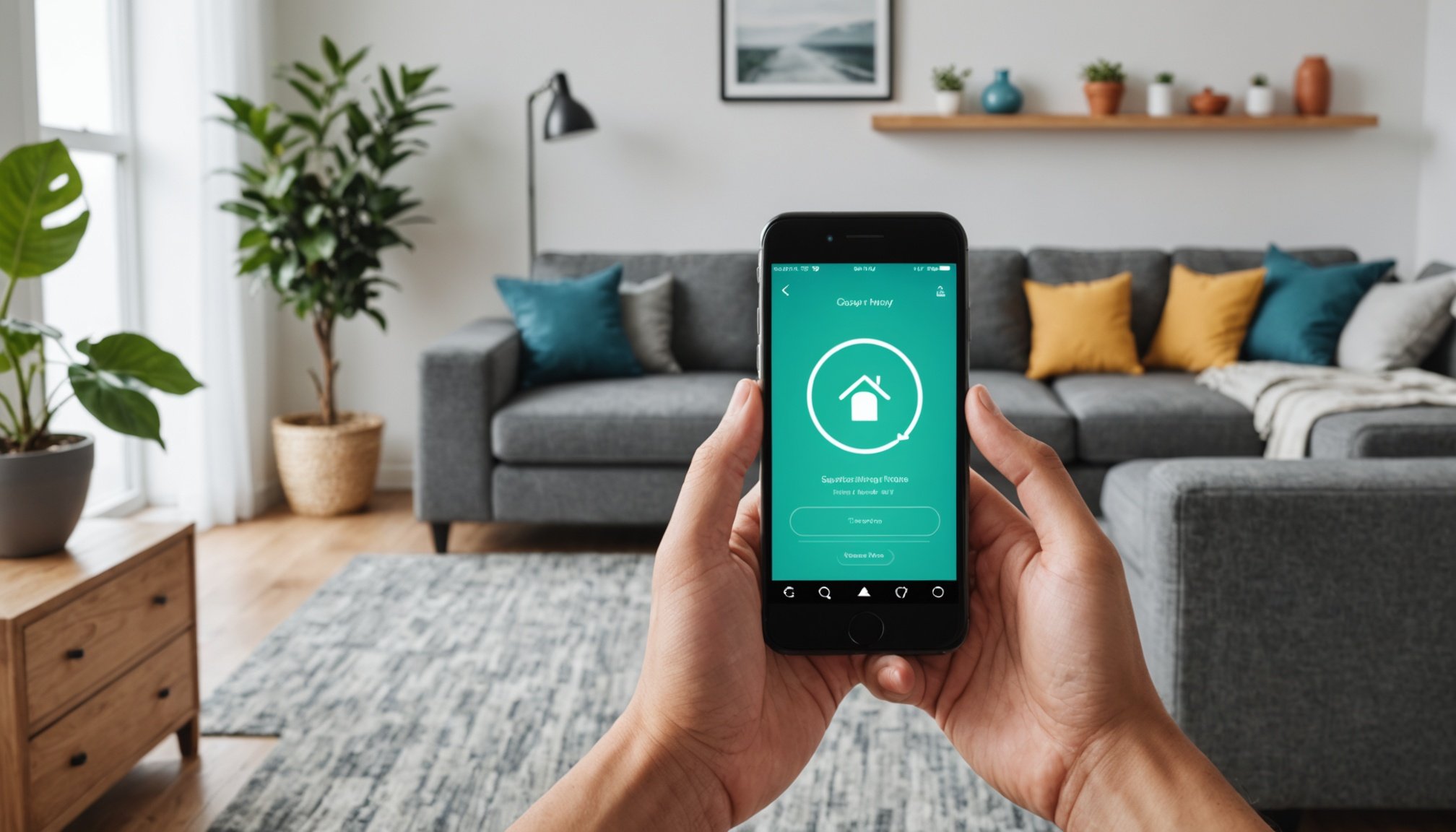Overview of Smart Home Ecosystems
Smart Home Ecosystems, such as Amazon Alexa, Google Home, and Apple HomeKit, are revolutionising domestic life by connecting devices through a cohesive network. These ecosystems allow users to control a multitude of smart devices using voice commands or smartphone apps, making everyday tasks more efficient and enjoyable.
Integrating smartphones with these ecosystems enhances their functionality substantially. Smartphone Compatibility ensures seamless interaction between devices, allowing users to control smart home features remotely. For instance, smartphone users can adjust their smart thermostat or check their security cameras while away from home. This integration provides convenience and peace of mind, knowing that their home can be monitored and managed from anywhere.
Additional reading : Maximize Your Smart Home: The Complete Guide to Monitoring Solar Panel Energy Through Your Smartphone
A key consideration when choosing a smart home ecosystem is the compatibility of devices with different smartphones. Not all devices work with all ecosystems, so analysing this compatibility is crucial for effective Smart Home Integration. For instance, while some smart locks and lights may work flawlessly with Google Home, others might require Apple HomeKit for full functionality. Understanding these nuances allows users to build a smart home setup that caters directly to their needs and preferences, ensuring maximum efficiency and satisfaction.
Essential Smartphone Apps for Smart Home Control
Smart Home Apps play a pivotal role in managing and enhancing your connected living space. These apps enable Device Control and facilitate seamless interaction between users and smart home devices. Several popular options are available for smartphone users, offering varying levels of convenience and efficiency.
Also to read : Transform Your Living Room: The Ultimate Guide to Creating a Smartphone-Operated Surround Sound Home Theater Experience
The Amazon Alexa app not only controls Alexa-enabled devices but also streamlines Automation Apps. It supports routines and has a user-friendly interface, allowing for easy customization. Similarly, the Google Home app offers comprehensive management for Google-enabled devices. It integrates well with various smart home products, providing a robust platform for creating routines and managing devices with ease.
When choosing a smart home app, key features to consider include usability, compatibility with your devices, and the ability to customize settings. Apps with intuitive interfaces and options for automation prove invaluable in daily operations.
To optimize your experience, organize app settings by prioritizing frequently used devices. This simplifies navigating through the app and ensures you can access essential functions swiftly. Regularly updating apps and enabling notifications also help maintain efficient control over your smart home environment, keeping you informed about device activities and enhancing overall user satisfaction.
Automating Devices for Efficiency
Automation in Smart Home Ecosystems enhances home life by streamlining daily operations. By implementing efficient Smart Home Automation techniques, users improve the functionality of devices such as lights, thermostats, and security systems. Automating these devices involves setting specific schedules or employing voice commands for intuitive control. For example, lights can be programmed to turn on at sunset, creating a secure environment after dark.
Incorporating Device Scheduling offers another layer of efficiency. Households benefit from pre-setting heating schedules, ensuring comfort while reducing energy use. Scheduling not only optimises convenience but can result in substantial cost savings.
Utilising Automation Techniques such as geofencing significantly enhances the smart home experience. This allows devices to activate based on geographical location, providing personalised home settings as occupants arrive or leave. Also, experimentation with IFTTT (If This Then That) can further optimise device interactions, creating conditions where a specific user’s command triggers detailed sequential actions. It enables sophisticated scenarios, like powering down lights and locking doors once your evening routine is detected.
Real-world experience shows that such technologies lead to improved living environments, providing efficiency and control over daily household tasks, and contribute to a more seamless and proactive home management experience.
Troubleshooting Common Smart Home Issues
When utilising smart home technologies, encountering technical issues is unavoidable. Smart Home Troubleshooting focuses on resolving these common problems effectively. A frequent issue is devices failing to connect to the home network. Begin by checking the device’s Wi-Fi connection and ensuring it aligns with your router’s frequency (2.4 GHz or 5 GHz). Restarting both the router and the smart device often resolves connectivity hiccups.
If a device is unresponsive to commands, verify that the latest firmware is installed. Outdated software can lead to compatibility issues, so regularly updating devices is essential. Additionally, verify that the device’s settings haven’t been accidentally altered, which might disrupt functionality.
For solutions needing deeper insights, many device manufacturers offer comprehensive guidelines and troubleshooting tips on their support pages. Furthermore, community support platforms like forums and user groups provide valuable advice, often sharing experiences and solutions for similar issues.
Smart homeowners should utilise app notifications for real-time alerts about any potential device problems. Such proactive measures can prevent small issues from escalating. If problems persist, consider seeking expert assistance from qualified technicians or through live chat support offered by most renowned smart home brands.
Advanced Smart Home Techniques
In the realm of Smart Home Innovation, possibilities extend far beyond basic automation. Exploring Advanced Automation setups enables users to unlock a higher level of convenience. For instance, geofencing can trigger actions based on location. As you approach your home, your smart thermostat adjusts to an ideal temperature, and lights switch on automatically, welcoming you.
Integrating third-party services through platforms like IFTTT offers expanded functionality. This integration allows the creation of complex chains of actions across different devices and services. Picture a scenario where your coffee machine starts brewing as your morning alarm sounds, demonstrating seamless Integration Techniques for an enhanced daily routine.
Future trends in smart home technology hint at even more sophisticated capabilities. As smartphone applications evolve, expect even richer, interactive experiences with home devices. Advanced voice recognition and AI could facilitate more personalized settings, learning user habits to anticipate needs better. Embracing these trends will fortify the smart home ecosystem, making it more intuitive and fluent in meeting users’ desires.
Proactively engaging with cutting-edge technologies ensures that smart homes not only remain efficient but also adapt to the changing needs and lifestyles of their inhabitants, cementing their role in modern living.
Safety and Privacy Considerations
In the evolving landscape of Smart Home Security, ensuring robust protection for our devices is crucial. Effective management of privacy settings and data safety through smartphones can create a secure smart home environment. Begin by updating each device within your ecosystem regularly, as manufacturers frequently release security patches to counter new threats.
Privacy Protection involves meticulous control of permissions on smart home apps. It’s vital to review what data these applications access and manage it judiciously. Many apps request permissions, such as location or microphone access, that may not be necessary for their core functions. Restricting unnecessary access can significantly enhance your Data Safety.
Be aware of common security threats such as data breaches or unauthorized access to devices. Attackers may exploit vulnerabilities like weak passwords or unpatched software. Combat these risks by enabling two-factor authentication and using strong, unique passwords for each device and app.
To mitigate risks, consider the following best practices:
- Regularly audit device permissions and access logs.
- Ensure network security by setting a strong router password and enabling encryption standards.
- Opt for devices known for security reliability, combining functionality with comprehensive privacy protection.
These measures collectively contribute to a safer and more private smart home experience.
User Experiences and Case Studies
Delving into real-life Smart Home Experiences provides valuable insights into the technology’s practical application. User Stories reveal the seamless integration of smart home devices in personal and family settings, illustrating the diverse ways individuals enhance their living environments.
For instance, one family leveraged Smart Home Personalization to accommodate each member’s preferences. They created Custom Automation routines that cater to different morning schedules. Parents enjoy a waking sequence of lights and a freshly brewed coffee, while children have specific TV channels turned on during breakfast. This tailored approach demonstrates how versatile smart home setups can be.
Other users share how they resolved challenges through Device Scheduling and automation. A user synchronised their smart locks and lights to create a schedule that simulates occupancy while they are on vacation, adding an extra layer of security. Such Practical Applications highlight the safety benefits and peace of mind that smart home ecosystems can offer.
By learning from these User Stories, others can understand the potential of smart home technologies to enhance daily life, ensuring efficiency, security, and convenience. These experiences underline the flexibility and adaptability of smart home solutions to meet unique household needs.
Personalizing Smart Home Routines
Smart Home Personalization empowers you to tailor your living spaces according to your unique daily routines. By creating Custom Automation routines, you can seamlessly integrate technology into everyday life. Start by examining your family’s schedules and preferences. This will inform what automations or shortcuts might enhance convenience.
For example, by setting routines for different family members, mornings can become less chaotic. Parents might schedule kitchen lights to brighten gradually while their favourite podcast plays, synchronised with the morning coffee machine. Meanwhile, children might have an automated TV schedule that allows cartoons to start at breakfast time, ensuring a smoother morning routine for everyone.
Consider utilising smartphone shortcuts for efficient routine management. By assigning specific shortcuts, users can activate complex sequences with a simple tap. Prioritize frequently used routines for top accessibility, allowing adjustments with minimal effort.
Smart homes thrive with flexibility. As needs evolve, regularly adapt and update routines to maintain relevance and efficiency. Leveraging technology in this way not only personalises experiences but also maximizes the advantages offered by the latest smart home devices and software. With strategic customization, daily life becomes not just simpler, but uniquely yours.











